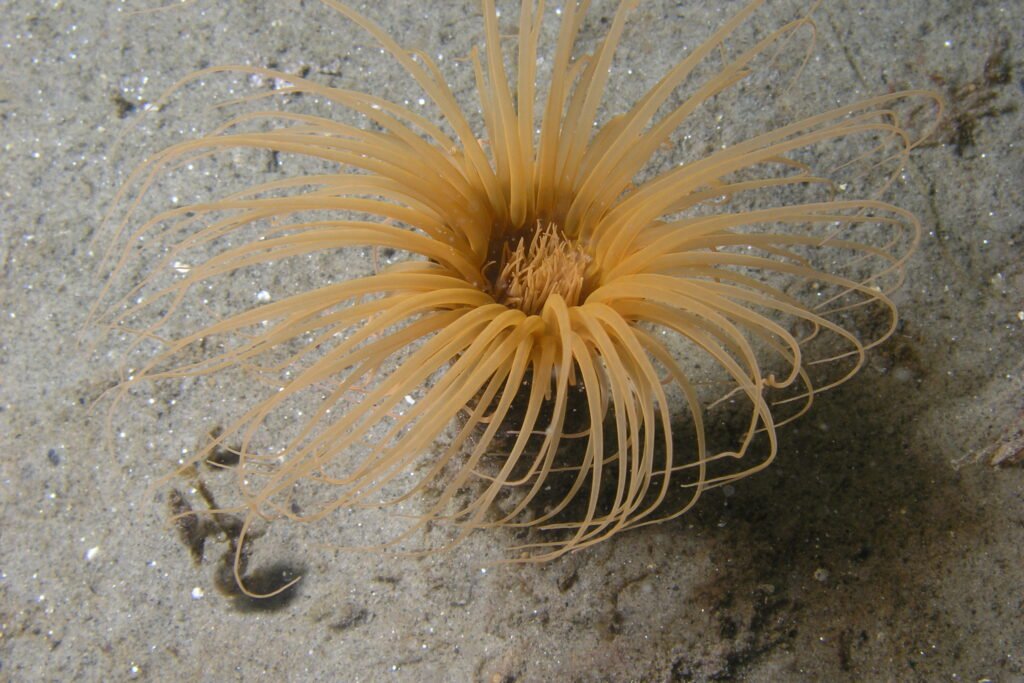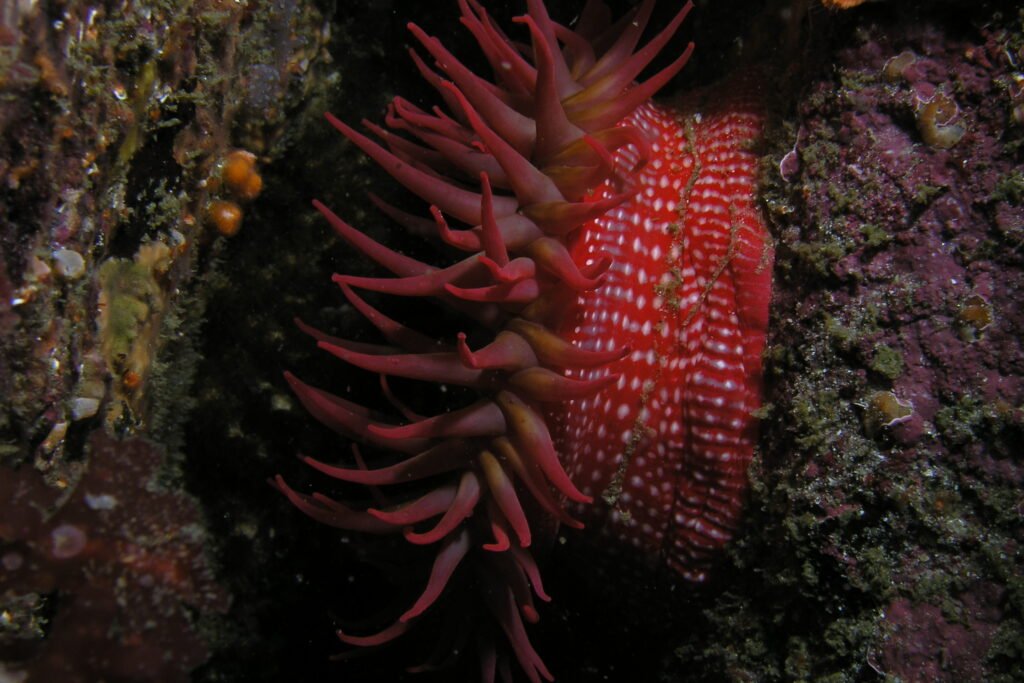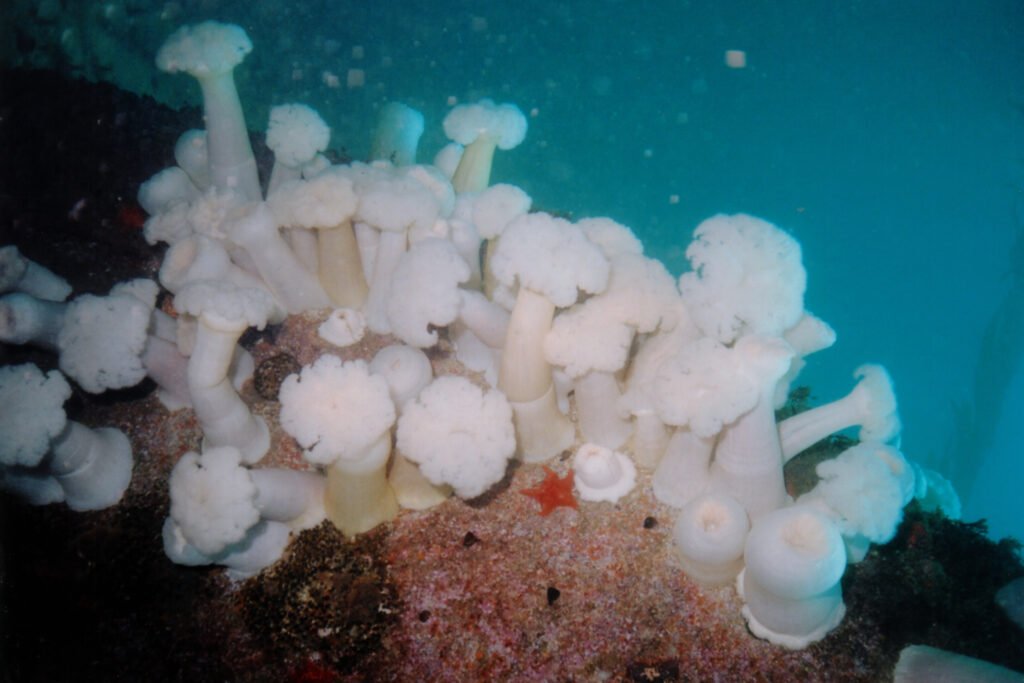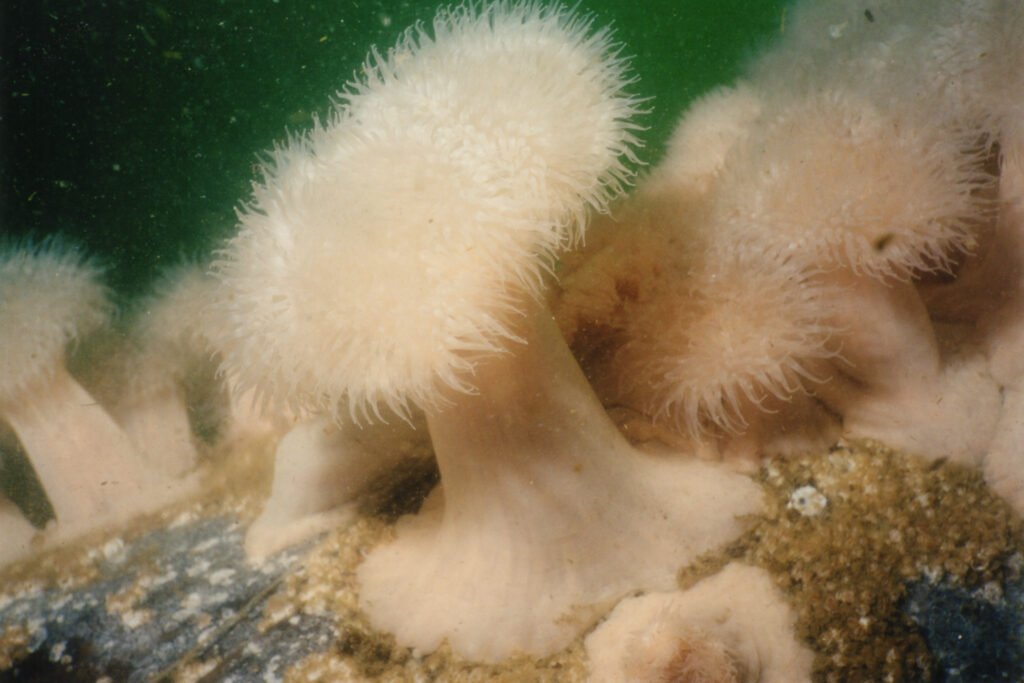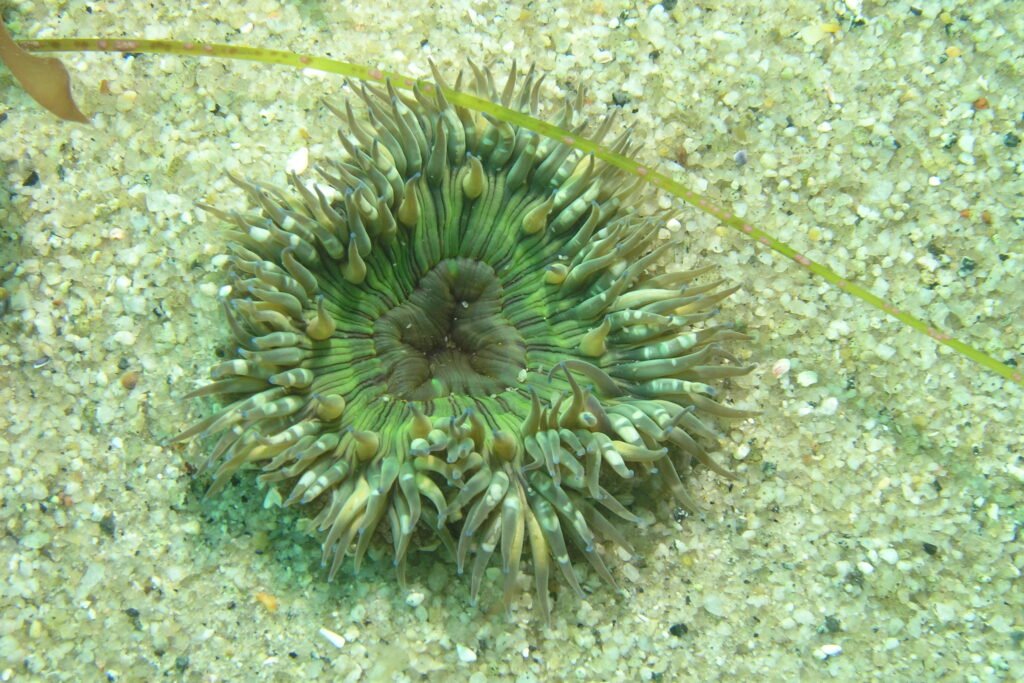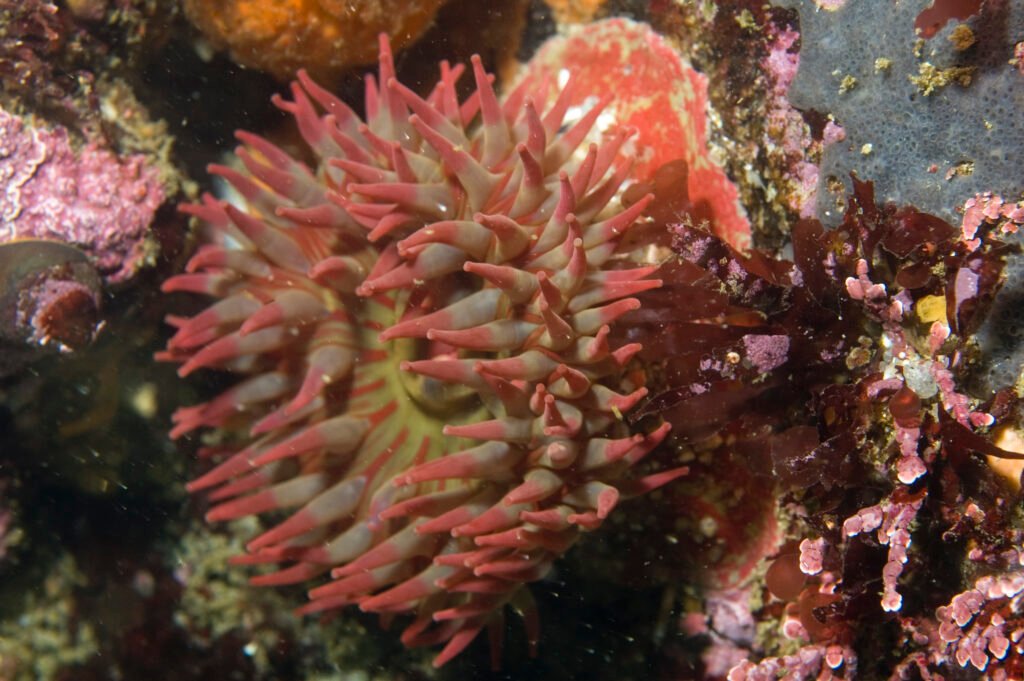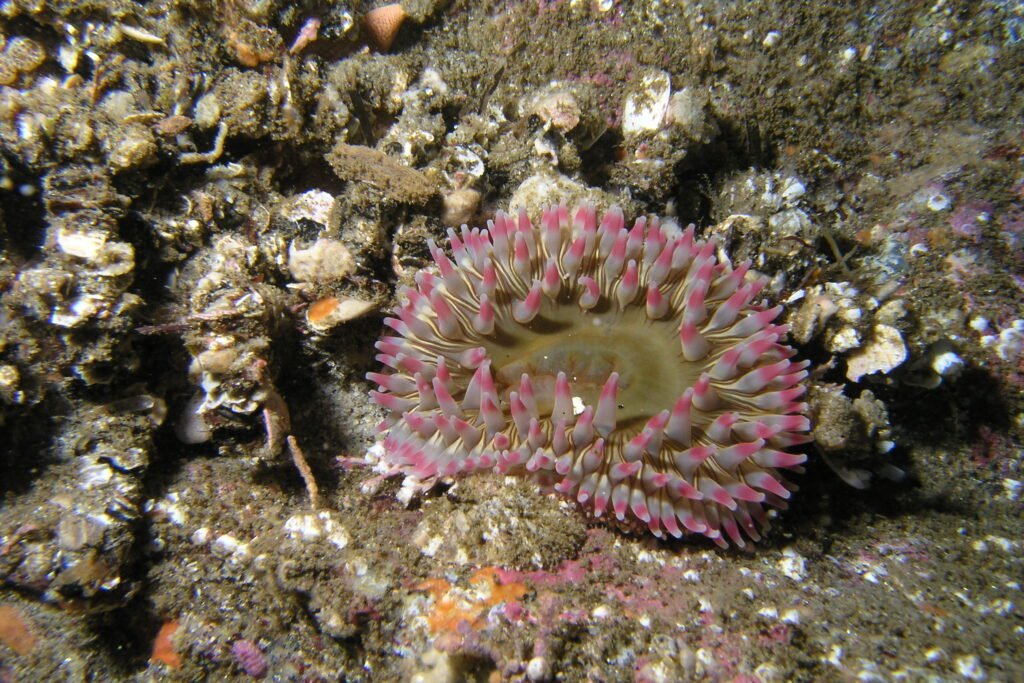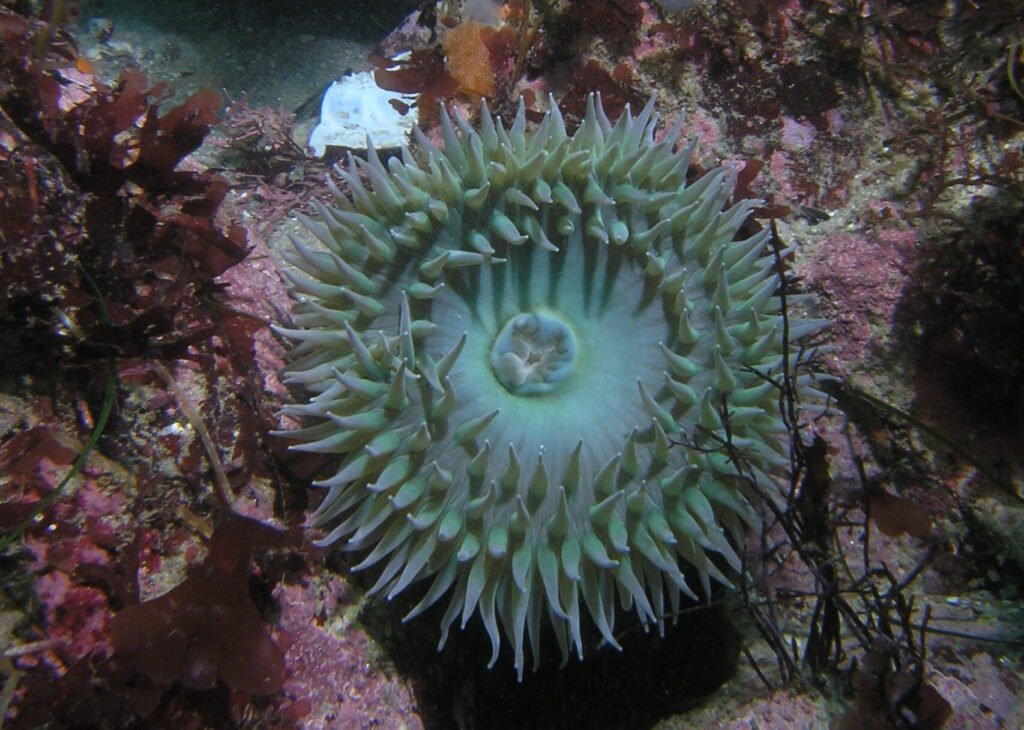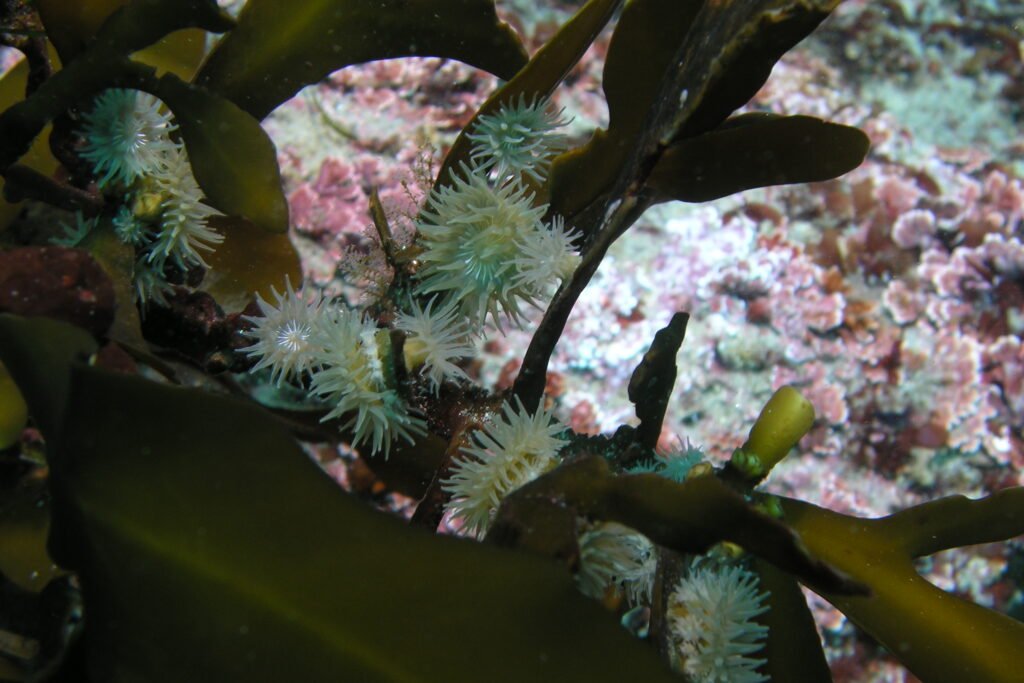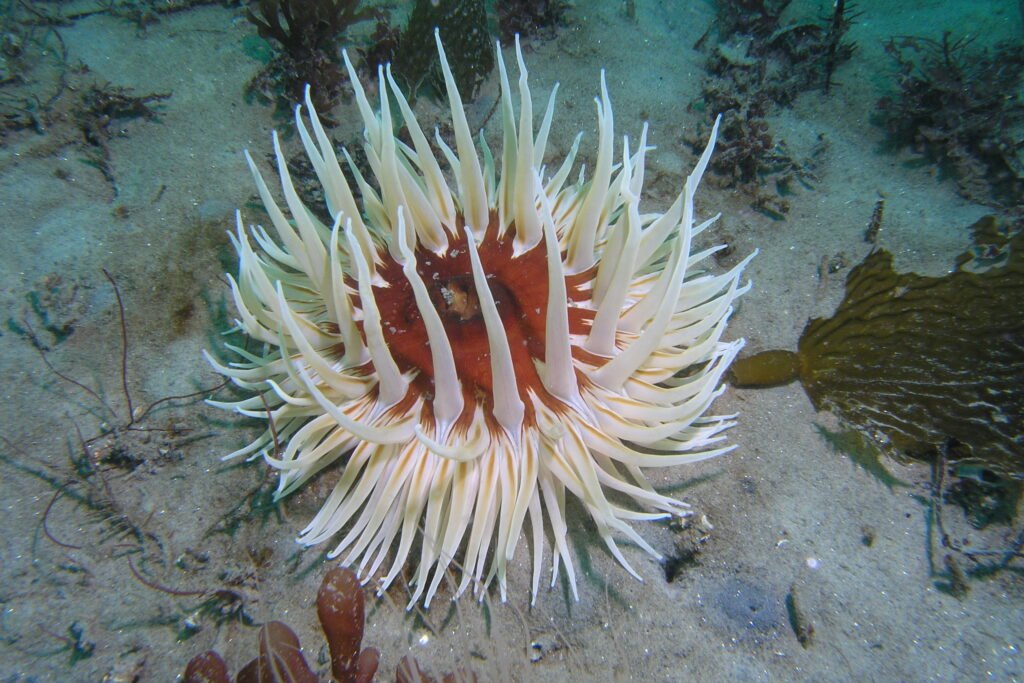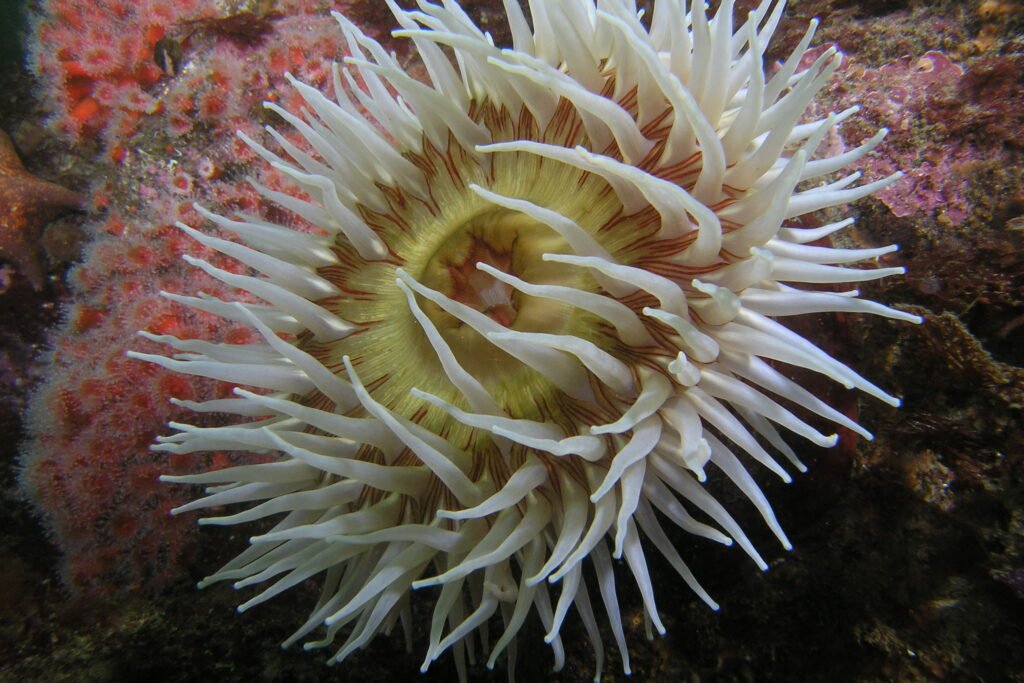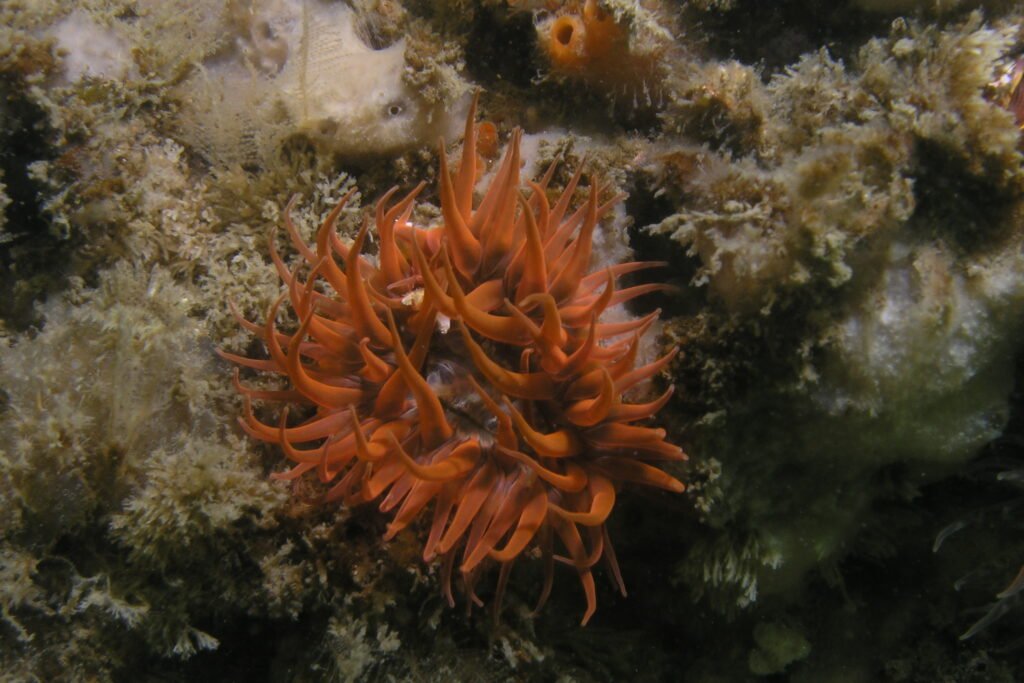Physical Description
Tube-dwelling anemones (Pachycerianthus fimbriatus) are cylindrical invertebrates with elongated bodies adapted for life within sandy or muddy substrates. They feature long, slender tentacles that extend from their oral disks, aiding in feeding and capturing prey. Colors vary but often include shades of brown, beige, or white.
Habitat and Geographical Range
Tube-dwelling anemones are commonly found in temperate and subtropical waters worldwide, residing in sandy or muddy substrates in coastal areas and sometimes even deeper offshore regions.
Diet and Reproduction
As carnivorous organisms, tube-dwelling anemones primarily feed on small plankton and microscopic organisms. They use their long tentacles to capture prey, directing it to their mouth for ingestion. Reproduction typically involves the release of eggs and sperm into the water column, where fertilization occurs, leading to larval development.
Physical Threat to Humans
Tube-dwelling anemones are not known to pose a direct physical threat to humans. However, their presence in sandy or muddy substrates means they can sometimes be encountered by beachgoers or divers, and inadvertent disturbance may occur.
